我是靠谱客的博主 无私皮卡丘,这篇文章主要介绍人脸检测、人脸定位、人脸对齐、MTCNN、人脸识别(衡量人脸的相似或不同:softmax、三元组损失Triplet Loss、中心损失Center Loss、ArcFace)日萌社,现在分享给大家,希望可以做个参考。
 日萌社
日萌社
人工智能AI:Keras PyTorch MXNet TensorFlow PaddlePaddle 深度学习实战(不定时更新)
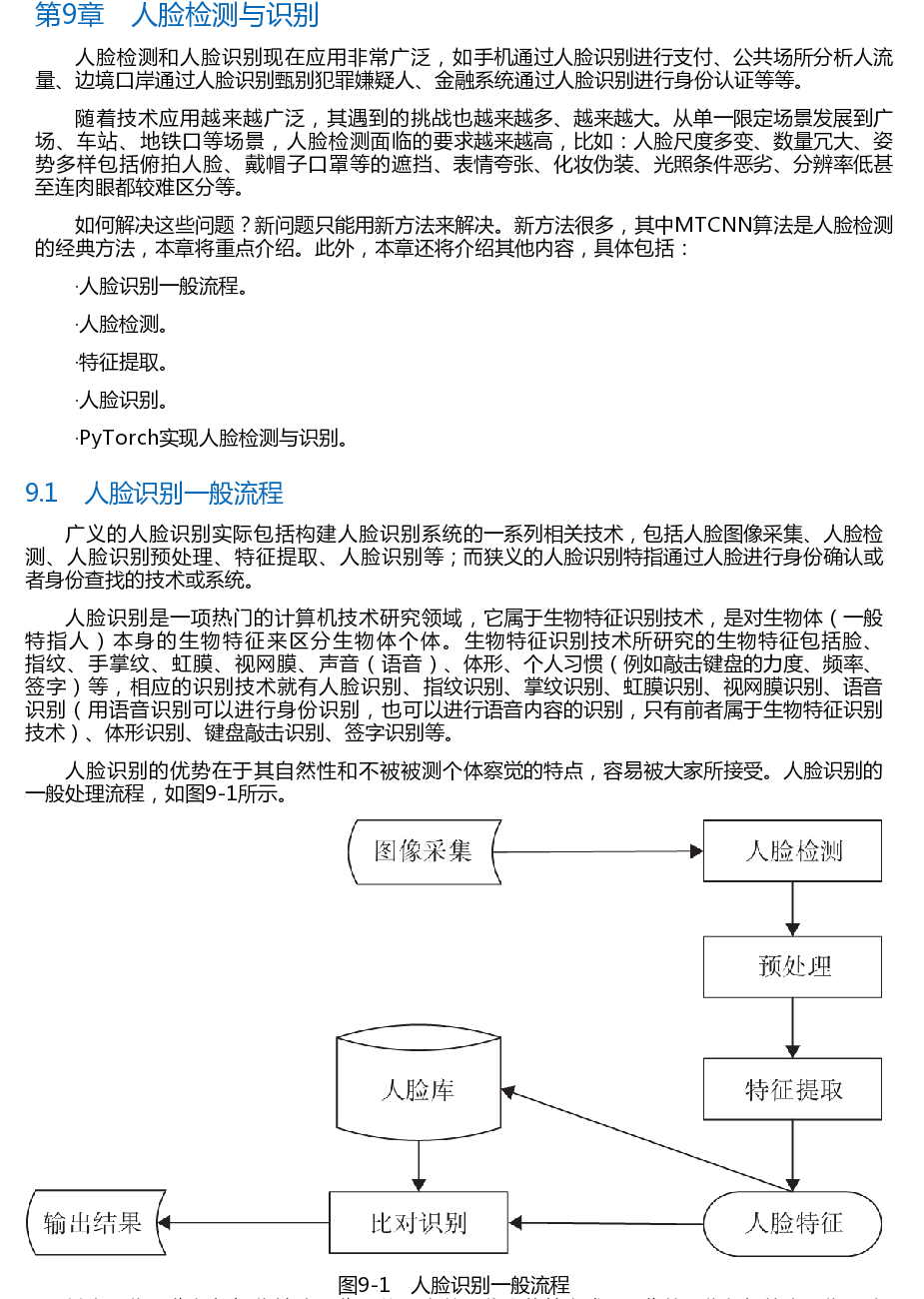

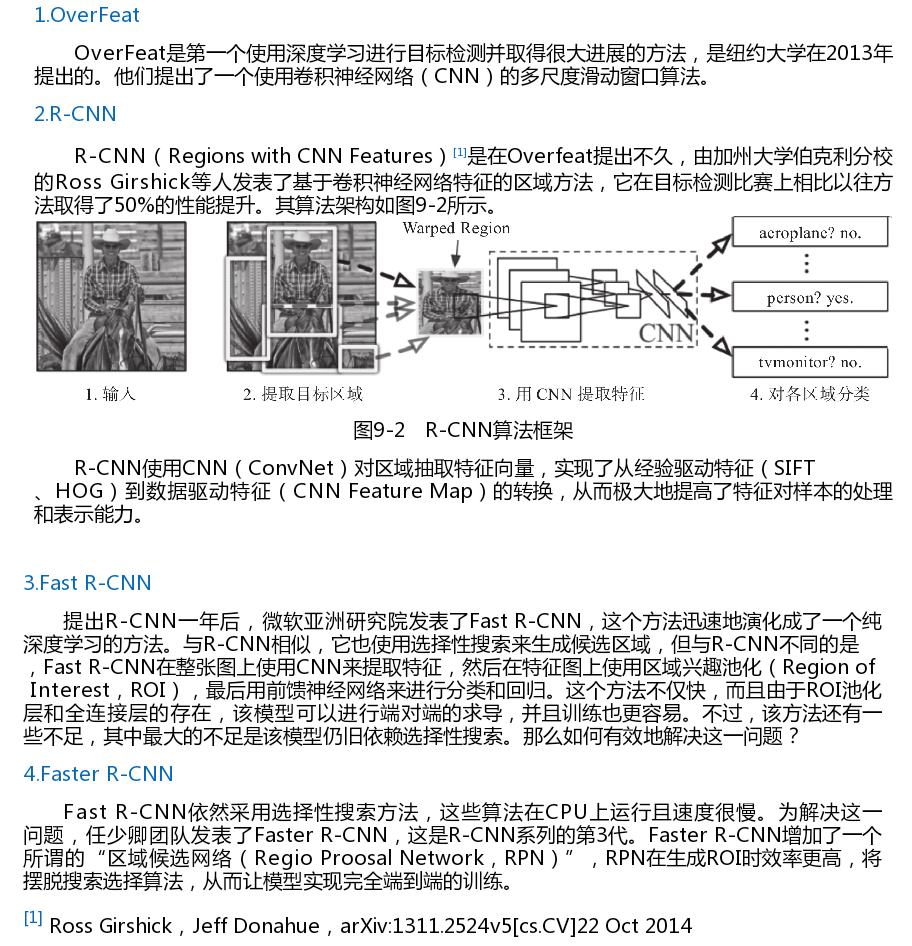



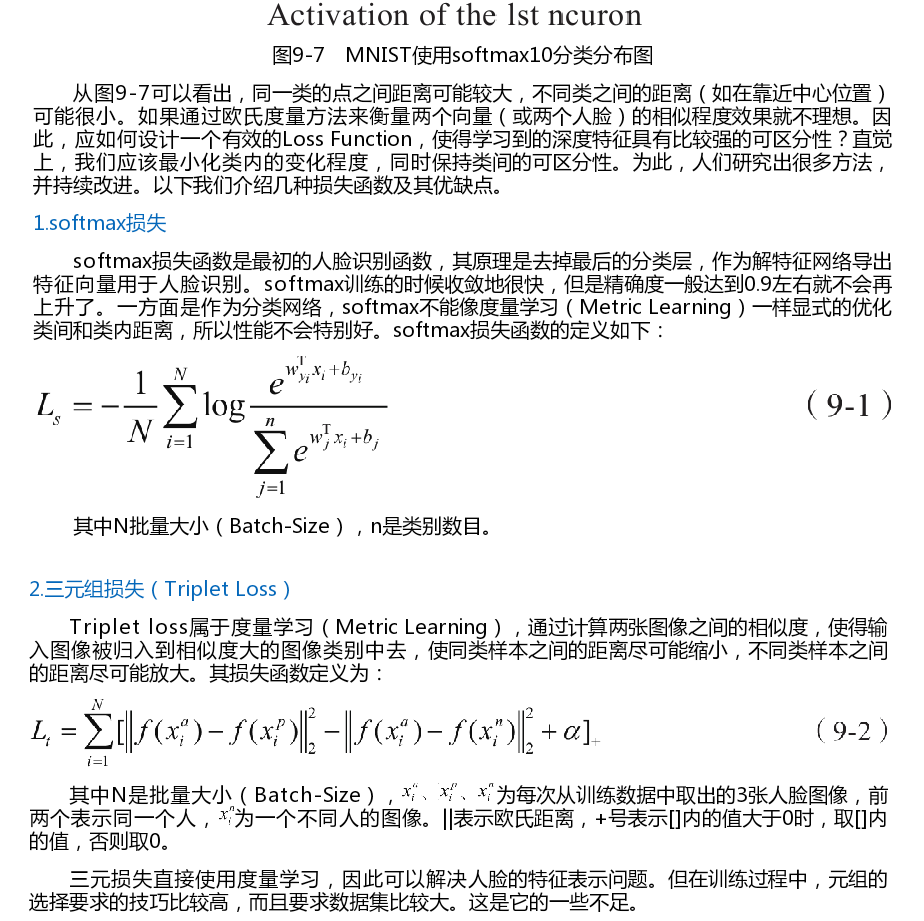

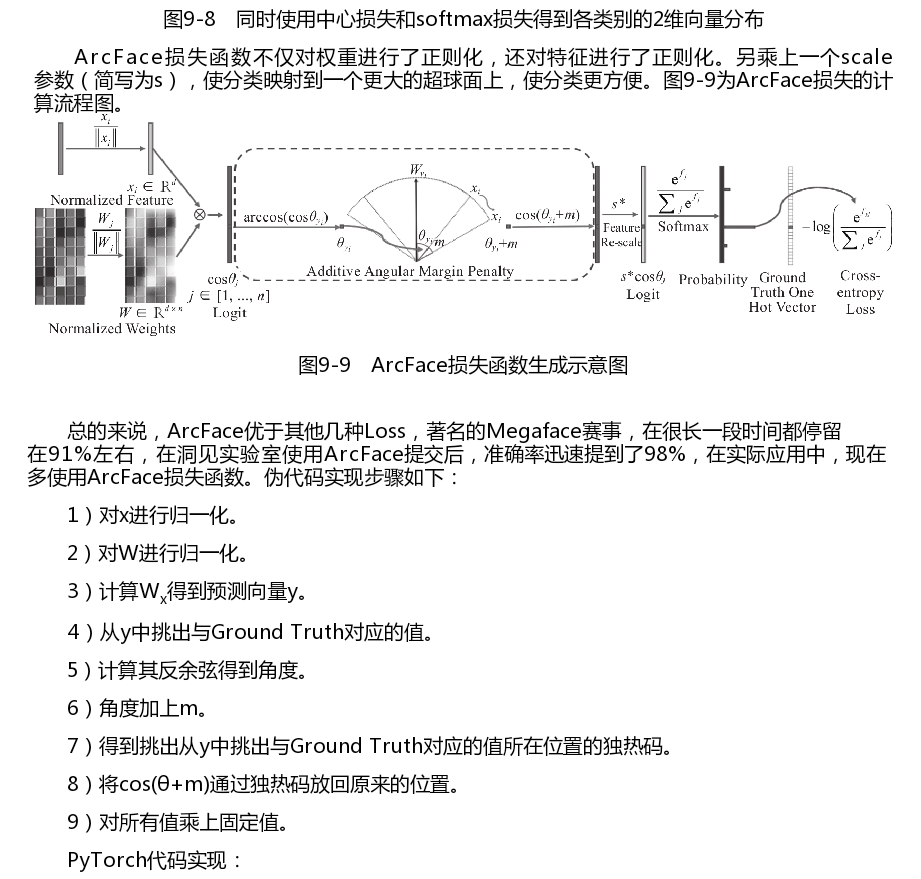

# ArcFace
class ArcMarginProduct(nn.Module):
r"""Implement of large margin arc distance: :
Args:
in_features: size of each input sample
out_features: size of each output sample
s: norm of input feature
m: margin
cos(theta + m)
"""
def __init__(self, in_features, out_features, s=30.0, m=0.50, easy_margin=False):
super(ArcMarginProduct, self).__init__()
self.in_features = in_features
self.out_features = out_features
self.s = s
self.m = m
# 初始化权重
self.weight = Parameter(torch.FloatTensor(out_features, in_features))
nn.init.xavier_uniform_(self.weight)
self.easy_margin = easy_margin
self.cos_m = math.cos(m)
self.sin_m = math.sin(m)
self.th = math.cos(math.pi - m)
self.mm = math.sin(math.pi - m) * m
def forward(self, input, label):
# cos(theta) & phi(theta)
# torch.nn.functional.linear(input, weight, bias=None)
# y=x*W^T+b
cosine = F.linear(F.normalize(input), F.normalize(self.weight))
sine = torch.sqrt(1.0 - torch.pow(cosine, 2))
# cos(a+b)=cos(a)*cos(b)-size(a)*sin(b)
phi = cosine * self.cos_m - sine * self.sin_m
if self.easy_margin:
# torch.where(condition, x, y) → Tensor
# condition (ByteTensor) – When True (nonzero), yield x, otherwise yield y
# x (Tensor) – values selected at indices where condition is True
# y (Tensor) – values selected at indices where condition is False
# return:
# A tensor of shape equal to the broadcasted shape of condition, x, y
# cosine>0 means two class is similar, thus use the phi which make it
phi = torch.where(cosine > 0, phi, cosine)
else:
phi = torch.where(cosine > self.th, phi, cosine - self.mm)
# convert label to one-hot
# one_hot = torch.zeros(cosine.size(), requires_grad=True, device='cuda')
# 将cos(theta + m)更新到tensor相应的位置中
one_hot = torch.zeros(cosine.size(), device='cuda')
# scatter_(dim, index, src)
one_hot.scatter_(1, label.view(-1, 1).long(), 1)
# torch.where(out_i = {x_i if condition_i else y_i)
output = (one_hot * phi) + ((1.0 - one_hot) * cosine)
output *= self.s
return output
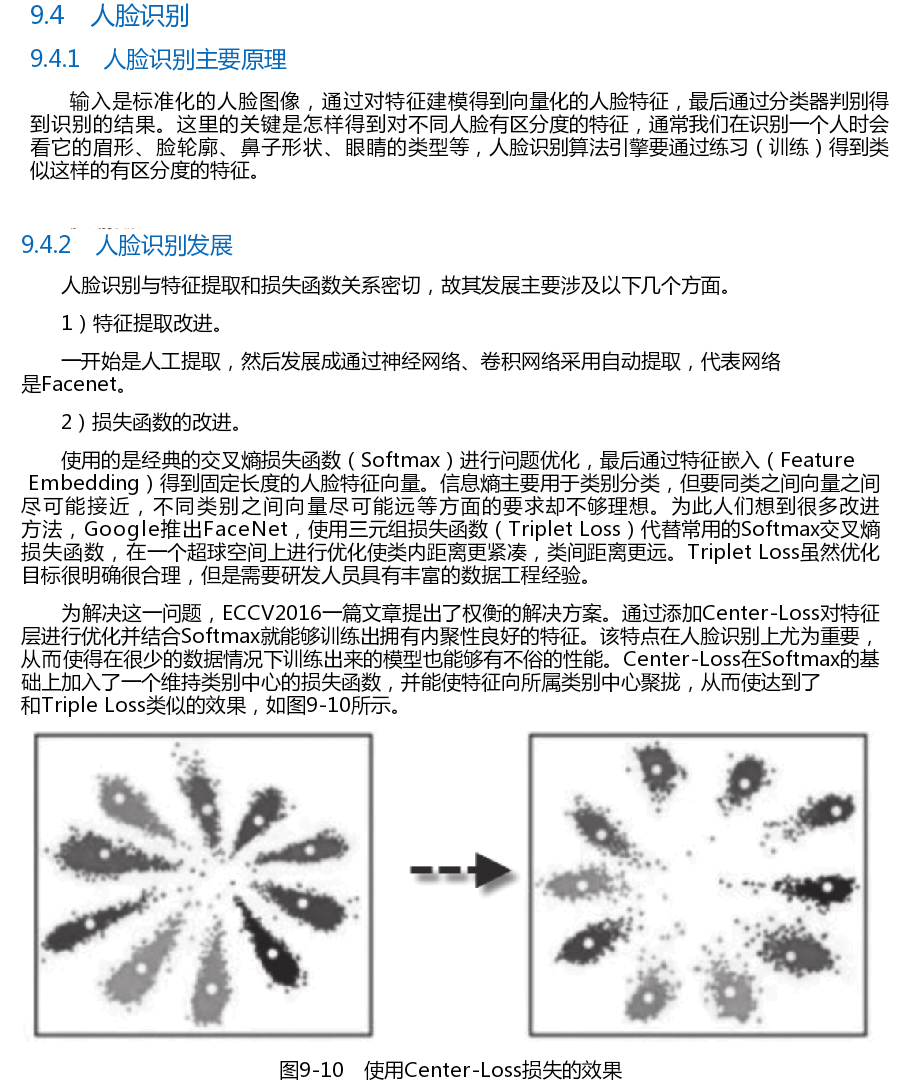
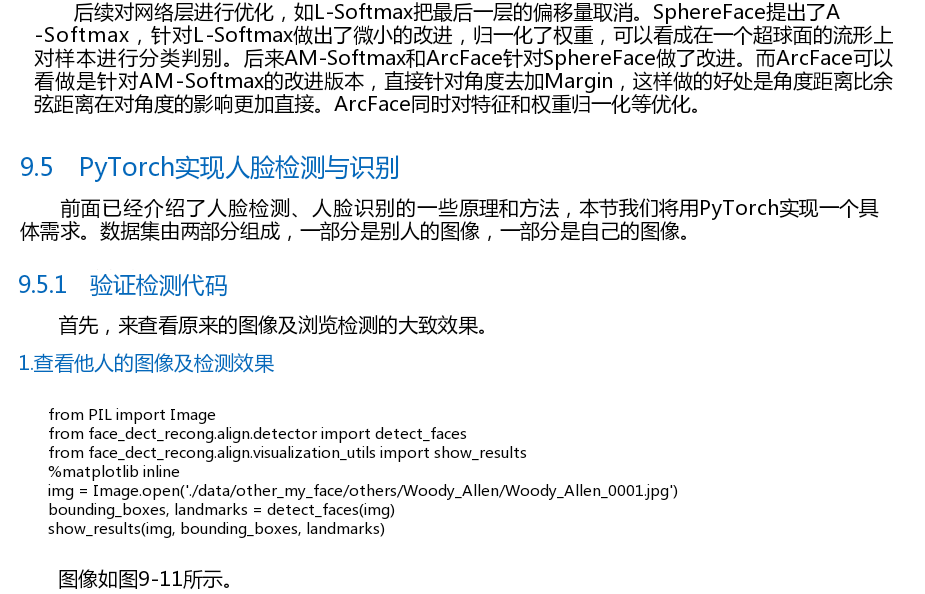

from PIL import Image
from detector import detect_faces
from visualization_utils import show_results
img = Image.open('some_img.jpg') # modify the image path to yours
bounding_boxes, landmarks = detect_faces(img) # detect bboxes and landmarks for all faces in the image
show_results(img, bounding_boxes, landmarks) # visualize the results
from PIL import Image
from face_dect_recong.align.detector import detect_faces
from face_dect_recong.align.visualization_utils import show_results
%matplotlib inline
img = Image.open('./data/other_my_face/my/my/myf112.jpg')
bounding_boxes, landmarks = detect_faces(img) # detect bboxes and landmarks for all faces in the image
show_results(img, bounding_boxes, landmarks) # visualize the results 
from PIL import Image
from face_dect_recong.align.detector import detect_faces
from face_dect_recong.align.visualization_utils import show_results
%matplotlib inline
img = Image.open('./data/other_my_face/others/Woody_Allen/Woody_Allen_0001.jpg')
bounding_boxes, landmarks = detect_faces(img)
show_results(img, bounding_boxes, landmarks)


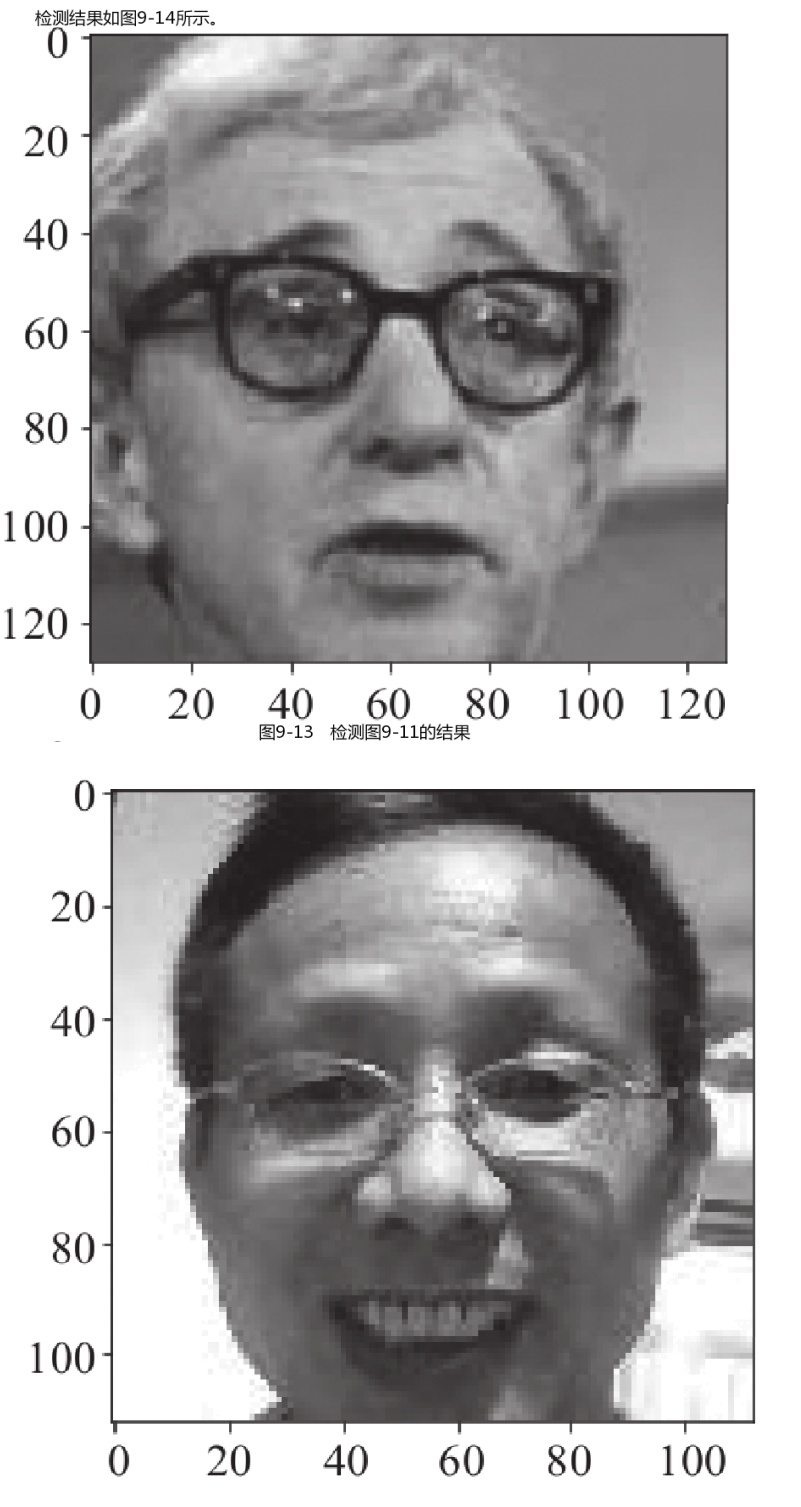
#对其他人的图像进行检测
%run face_dect_recong/align/face_align.py -source_root './data/other_my_face/others/' -dest_root './data/other_my_face_align/others' -crop_size 128
#对我的图像进行检测
%run face_dect_recong/align/face_align.py -source_root './data/other_my_face/my/' -dest_root './data/other_my_face_align/others/' -crop_size 128
import matplotlib.pyplot as plt
from matplotlib.image import imread
%matplotlib inline
img=imread('./data/other_my_face_align/others/my/myf112.jpg')
plt.imshow(img)
plt.show 
img=imread('./data/other_my_face_align/others/Woody_Allen/Woody_Allen_0002.jpg')
plt.imshow(img)
plt.show 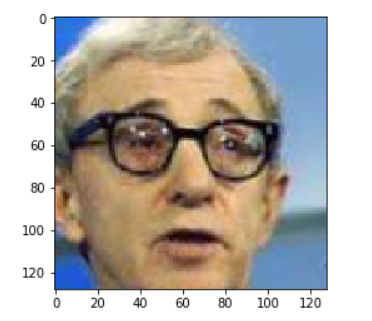
#删除小于4张的一些人
%run face_dect_recong/balance/remove_lowshot.py -root './data/other_my_face_align/others' -min_num 4
img=imread('./data/dataset/lfw/lfw-align-128/Zico/Zico_0001.jpg')
plt.imshow(img)
plt.show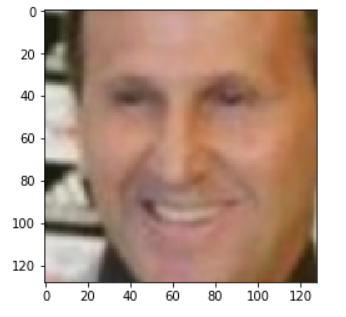
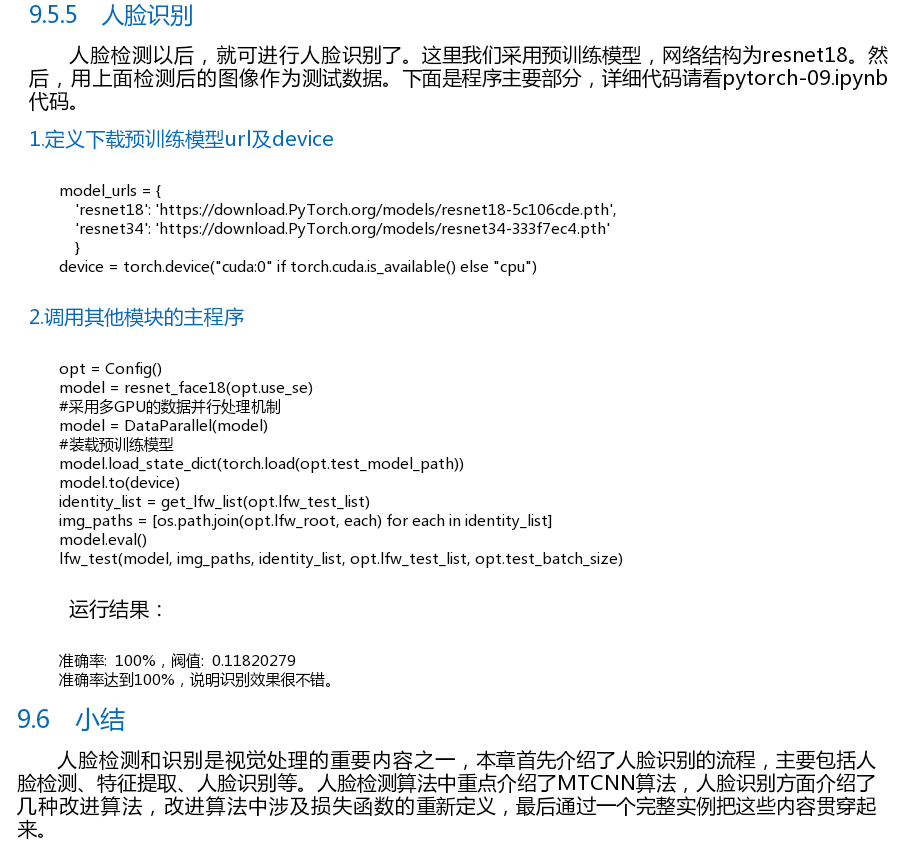
class Config(object):
env = 'default'
backbone = 'resnet18'
classify = 'softmax'
metric = 'arc_margin'
easy_margin = False
#是否使用压缩奖惩网络模块(Squeeze-and-Excitation Blocks)
use_se = False
loss = 'focal_loss'
display = False
finetune = False
lfw_root = '/home/wumg/data/data/other_my_face_align/others'
lfw_test_list = '/home/wumg/data/data/other_my_face_align/others_test_pair.txt'
test_model_path = '/home/wumg/data/data/dataset/lfw/resnet18_110.pth'
save_interval = 10
train_batch_size = 16 # batch size
test_batch_size = 60
input_shape = (1, 128, 128)
optimizer = 'sgd'
use_gpu = True # use GPU or not
gpu_id = '0, 1'
num_workers = 4 # how many workers for loading data
max_epoch = 2
lr = 1e-1 # initial learning rate
lr_step = 10
lr_decay = 0.95 # when val_loss increase, lr = lr*lr_decay
weight_decay = 5e-4
from __future__ import print_function
import os
import cv2
from models import *
import torch
import torch.nn as nn
import numpy as np
import time
from torch.nn import DataParallel
import torch.utils.model_zoo as model_zoo
import torch.nn.functional as F
model_urls = {
'resnet18': 'https://download.pytorch.org/models/resnet18-5c106cde.pth',
'resnet34': 'https://download.pytorch.org/models/resnet34-333f7ec4.pth'
}
device = torch.device("cuda:0" if torch.cuda.is_available() else "cpu")
def conv3x3(in_planes, out_planes, stride=1):
"""3x3 convolution with padding"""
return nn.Conv2d(in_planes, out_planes, kernel_size=3, stride=stride,
padding=1, bias=False)
class BasicBlock(nn.Module):
expansion = 1
def __init__(self, inplanes, planes, stride=1, downsample=None):
super(BasicBlock, self).__init__()
self.conv1 = conv3x3(inplanes, planes, stride)
self.bn1 = nn.BatchNorm2d(planes)
self.relu = nn.ReLU(inplace=True)
self.conv2 = conv3x3(planes, planes)
self.bn2 = nn.BatchNorm2d(planes)
self.downsample = downsample
self.stride = stride
def forward(self, x):
residual = x
out = self.conv1(x)
out = self.bn1(out)
out = self.relu(out)
out = self.conv2(out)
out = self.bn2(out)
if self.downsample is not None:
residual = self.downsample(x)
out += residual
out = self.relu(out)
return out
class IRBlock(nn.Module):
expansion = 1
def __init__(self, inplanes, planes, stride=1, downsample=None, use_se=True):
super(IRBlock, self).__init__()
self.bn0 = nn.BatchNorm2d(inplanes)
self.conv1 = conv3x3(inplanes, inplanes)
self.bn1 = nn.BatchNorm2d(inplanes)
self.prelu = nn.PReLU()
self.conv2 = conv3x3(inplanes, planes, stride)
self.bn2 = nn.BatchNorm2d(planes)
self.downsample = downsample
self.stride = stride
self.use_se = use_se
if self.use_se:
self.se = SEBlock(planes)
def forward(self, x):
residual = x
out = self.bn0(x)
out = self.conv1(out)
out = self.bn1(out)
out = self.prelu(out)
out = self.conv2(out)
out = self.bn2(out)
if self.use_se:
out = self.se(out)
if self.downsample is not None:
residual = self.downsample(x)
out += residual
out = self.prelu(out)
return out
class ResNetFace(nn.Module):
def __init__(self, block, layers, use_se=True):
self.inplanes = 64
self.use_se = use_se
super(ResNetFace, self).__init__()
self.conv1 = nn.Conv2d(1, 64, kernel_size=3, padding=1, bias=False)
self.bn1 = nn.BatchNorm2d(64)
self.prelu = nn.PReLU()
self.maxpool = nn.MaxPool2d(kernel_size=2, stride=2)
self.layer1 = self._make_layer(block, 64, layers[0])
self.layer2 = self._make_layer(block, 128, layers[1], stride=2)
self.layer3 = self._make_layer(block, 256, layers[2], stride=2)
self.layer4 = self._make_layer(block, 512, layers[3], stride=2)
self.bn4 = nn.BatchNorm2d(512)
self.dropout = nn.Dropout()
self.fc5 = nn.Linear(512 * 8 * 8, 512)
self.bn5 = nn.BatchNorm1d(512)
for m in self.modules():
if isinstance(m, nn.Conv2d):
nn.init.xavier_normal_(m.weight)
elif isinstance(m, nn.BatchNorm2d) or isinstance(m, nn.BatchNorm1d):
nn.init.constant_(m.weight, 1)
nn.init.constant_(m.bias, 0)
elif isinstance(m, nn.Linear):
nn.init.xavier_normal_(m.weight)
nn.init.constant_(m.bias, 0)
def _make_layer(self, block, planes, blocks, stride=1):
downsample = None
if stride != 1 or self.inplanes != planes * block.expansion:
downsample = nn.Sequential(
nn.Conv2d(self.inplanes, planes * block.expansion,
kernel_size=1, stride=stride, bias=False),
nn.BatchNorm2d(planes * block.expansion),
)
layers = []
layers.append(block(self.inplanes, planes, stride, downsample, use_se=self.use_se))
self.inplanes = planes
for i in range(1, blocks):
layers.append(block(self.inplanes, planes, use_se=self.use_se))
return nn.Sequential(*layers)
def forward(self, x):
x = self.conv1(x)
x = self.bn1(x)
x = self.prelu(x)
x = self.maxpool(x)
x = self.layer1(x)
x = self.layer2(x)
x = self.layer3(x)
x = self.layer4(x)
x = self.bn4(x)
x = self.dropout(x)
x = x.view(x.size(0), -1)
x = self.fc5(x)
x = self.bn5(x)
return x
class ResNet(nn.Module):
def __init__(self, block, layers):
self.inplanes = 64
super(ResNet, self).__init__()
# self.conv1 = nn.Conv2d(3, 64, kernel_size=7, stride=2, padding=3,
# bias=False)
self.conv1 = nn.Conv2d(1, 64, kernel_size=3, stride=1, padding=1,
bias=False)
self.bn1 = nn.BatchNorm2d(64)
self.relu = nn.ReLU(inplace=True)
# self.maxpool = nn.MaxPool2d(kernel_size=3, stride=2, padding=1)
self.layer1 = self._make_layer(block, 64, layers[0], stride=2)
self.layer2 = self._make_layer(block, 128, layers[1], stride=2)
self.layer3 = self._make_layer(block, 256, layers[2], stride=2)
self.layer4 = self._make_layer(block, 512, layers[3], stride=2)
self.fc5 = nn.Linear(512 * 8 * 8, 512)
for m in self.modules():
if isinstance(m, nn.Conv2d):
nn.init.kaiming_normal_(m.weight, mode='fan_out', nonlinearity='relu')
elif isinstance(m, nn.BatchNorm2d):
nn.init.constant_(m.weight, 1)
nn.init.constant_(m.bias, 0)
def _make_layer(self, block, planes, blocks, stride=1):
downsample = None
if stride != 1 or self.inplanes != planes * block.expansion:
downsample = nn.Sequential(
nn.Conv2d(self.inplanes, planes * block.expansion,
kernel_size=1, stride=stride, bias=False),
nn.BatchNorm2d(planes * block.expansion),
)
layers = []
layers.append(block(self.inplanes, planes, stride, downsample))
self.inplanes = planes * block.expansion
for i in range(1, blocks):
layers.append(block(self.inplanes, planes))
return nn.Sequential(*layers)
def forward(self, x):
x = self.conv1(x)
x = self.bn1(x)
x = self.relu(x)
# x = self.maxpool(x)
x = self.layer1(x)
x = self.layer2(x)
x = self.layer3(x)
x = self.layer4(x)
# x = nn.AvgPool2d(kernel_size=x.size()[2:])(x)
# x = self.avgpool(x)
x = x.view(x.size(0), -1)
x = self.fc5(x)
return x
def resnet18(pretrained=False, **kwargs):
"""Constructs a ResNet-18 model.
Args:
pretrained (bool): If True, returns a model pre-trained on ImageNet
"""
model = ResNet(BasicBlock, [2, 2, 2, 2], **kwargs)
if pretrained:
model.load_state_dict(model_zoo.load_url(model_urls['resnet18']))
return model
def resnet_face18(use_se=True, **kwargs):
model = ResNetFace(IRBlock, [2, 2, 2, 2], use_se=use_se, **kwargs)
return model
def get_lfw_list(pair_list):
with open(pair_list, 'r') as fd:
pairs = fd.readlines()
data_list = []
for pair in pairs:
splits = pair.split()
if splits[0] not in data_list:
data_list.append(splits[0])
if splits[1] not in data_list:
data_list.append(splits[1])
return data_list
def load_image(img_path):
image = cv2.imread(img_path, 0)
if image is None:
return None
image = np.dstack((image, np.fliplr(image)))
image = image.transpose((2, 0, 1))
image = image[:, np.newaxis, :, :]
image = image.astype(np.float32, copy=False)
image -= 127.5
image /= 127.5
return image
def get_featurs(model, test_list, batch_size=10):
images = None
features = None
cnt = 0
for i, img_path in enumerate(test_list):
image = load_image(img_path)
if image is None:
print('read {} error'.format(img_path))
if images is None:
images = image
else:
images = np.concatenate((images, image), axis=0)
if images.shape[0] % batch_size == 0 or i == len(test_list) - 1:
cnt += 1
data = torch.from_numpy(images)
data = data.to(device)
output = model(data)
output = output.data.cpu().numpy()
fe_1 = output[::2]
fe_2 = output[1::2]
feature = np.hstack((fe_1, fe_2))
# print(feature.shape)
if features is None:
features = feature
else:
features = np.vstack((features, feature))
images = None
return features, cnt
def load_model(model, model_path):
model_dict = model.state_dict()
pretrained_dict = torch.load(model_path)
pretrained_dict = {k: v for k, v in pretrained_dict.items() if k in model_dict}
model_dict.update(pretrained_dict)
model.load_state_dict(model_dict)
def get_feature_dict(test_list, features):
fe_dict = {}
for i, each in enumerate(test_list):
# key = each.split('/')[1]
fe_dict[each] = features[i]
return fe_dict
def cosin_metric(x1, x2):
return np.dot(x1, x2) / (np.linalg.norm(x1) * np.linalg.norm(x2))
def cal_accuracy(y_score, y_true):
y_score = np.asarray(y_score)
y_true = np.asarray(y_true)
best_acc = 0
best_th = 0
for i in range(len(y_score)):
th = y_score[i]
y_test = (y_score >= th)
acc = np.mean((y_test == y_true).astype(int))
if acc > best_acc:
best_acc = acc
best_th = th
return (best_acc, best_th)
def test_performance(fe_dict, pair_list):
with open(pair_list, 'r') as fd:
pairs = fd.readlines()
sims = []
labels = []
for pair in pairs:
splits = pair.split()
fe_1 = fe_dict[splits[0]]
fe_2 = fe_dict[splits[1]]
label = int(splits[2])
sim = cosin_metric(fe_1, fe_2)
sims.append(sim)
labels.append(label)
acc, th = cal_accuracy(sims, labels)
return acc, th
def lfw_test(model, img_paths, identity_list, compair_list, batch_size):
s = time.time()
features, cnt = get_featurs(model, img_paths, batch_size=batch_size)
#print(features.shape)
t = time.time() - s
#print('共用时间 {}, average time is {}'.format(t, t / cnt))
fe_dict = get_feature_dict(identity_list, features)
acc, th = test_performance(fe_dict, compair_list)
print('准确率: ', acc, '阀值: ', th)
return acc
opt = Config()
model = resnet_face18(opt.use_se)
#采用多GPU的数据并行处理机制
model = DataParallel(model)
#装载预训练模型
model.load_state_dict(torch.load(opt.test_model_path))
model.to(device)
identity_list = get_lfw_list(opt.lfw_test_list)
img_paths = [os.path.join(opt.lfw_root, each) for each in identity_list]
model.eval()
lfw_test(model, img_paths, identity_list, opt.lfw_test_list, opt.test_batch_size)

#img_path='/home/wumg/data/data/other_my_face_align/others/Wen_Jiabao/Wen_Jiabao_0002.jpg'
img_path='/home/wumg/data/data/other_my_face_align/others/my/myf241.jpg'
#img_path='/home/wumg/data/data/dataset/lfw/lfw-align-128/Wen_Jiabao/Wen_Jiabao_0002.jpg'
image = cv2.imread(img_path, 0)
if image is None:
print("ok")
image = np.dstack((image, np.fliplr(image)))
image = image.transpose((2, 0, 1))
image = image[:, np.newaxis, :, :]
image = image.astype(np.float32, copy=False)
image -= 127.5
image /= 127.5
image.shape
![]()
from __future__ import print_function
import os
import cv2
from models import *
import torch
import numpy as np
import time
#from config import Config
from torch.nn import DataParallel
def get_lfw_list(pair_list):
with open(pair_list, 'r') as fd:
pairs = fd.readlines()
data_list = []
for pair in pairs:
splits = pair.split()
if splits[0] not in data_list:
data_list.append(splits[0])
if splits[1] not in data_list:
data_list.append(splits[1])
return data_list
def load_image(img_path):
image = cv2.imread(img_path, 0)
if image is None:
return None
image = np.dstack((image, np.fliplr(image)))
image = image.transpose((2, 0, 1))
image = image[:, np.newaxis, :, :]
image = image.astype(np.float32, copy=False)
image -= 127.5
image /= 127.5
return image
def get_featurs(model, test_list, batch_size=10):
images = None
features = None
cnt = 0
for i, img_path in enumerate(test_list):
image = load_image(img_path)
if image is None:
print('read {} error'.format(img_path))
if images is None:
images = image
else:
images = np.concatenate((images, image), axis=0)
if images.shape[0] % batch_size == 0 or i == len(test_list) - 1:
cnt += 1
data = torch.from_numpy(images)
data = data.to(torch.device("cuda"))
output = model(data)
output = output.data.cpu().numpy()
fe_1 = output[::2]
fe_2 = output[1::2]
feature = np.hstack((fe_1, fe_2))
# print(feature.shape)
if features is None:
features = feature
else:
features = np.vstack((features, feature))
images = None
return features, cnt
def load_model(model, model_path):
model_dict = model.state_dict()
pretrained_dict = torch.load(model_path)
pretrained_dict = {k: v for k, v in pretrained_dict.items() if k in model_dict}
model_dict.update(pretrained_dict)
model.load_state_dict(model_dict)
def get_feature_dict(test_list, features):
fe_dict = {}
for i, each in enumerate(test_list):
# key = each.split('/')[1]
fe_dict[each] = features[i]
return fe_dict
def cosin_metric(x1, x2):
return np.dot(x1, x2) / (np.linalg.norm(x1) * np.linalg.norm(x2))
def cal_accuracy(y_score, y_true):
y_score = np.asarray(y_score)
y_true = np.asarray(y_true)
best_acc = 0
best_th = 0
for i in range(len(y_score)):
th = y_score[i]
y_test = (y_score >= th)
acc = np.mean((y_test == y_true).astype(int))
if acc > best_acc:
best_acc = acc
best_th = th
return (best_acc, best_th)
def test_performance(fe_dict, pair_list):
with open(pair_list, 'r') as fd:
pairs = fd.readlines()
sims = []
labels = []
for pair in pairs:
splits = pair.split()
fe_1 = fe_dict[splits[0]]
fe_2 = fe_dict[splits[1]]
label = int(splits[2])
sim = cosin_metric(fe_1, fe_2)
sims.append(sim)
labels.append(label)
acc, th = cal_accuracy(sims, labels)
return acc, th
def lfw_test(model, img_paths, identity_list, compair_list, batch_size):
s = time.time()
features, cnt = get_featurs(model, img_paths, batch_size=batch_size)
print(features.shape)
t = time.time() - s
print('total time is {}, average time is {}'.format(t, t / cnt))
fe_dict = get_feature_dict(identity_list, features)
acc, th = test_performance(fe_dict, compair_list)
print('lfw face verification accuracy: ', acc, 'threshold: ', th)
return acc
if __name__ == '__main__':
opt = Config()
if opt.backbone == 'resnet18':
model = resnet_face18(opt.use_se)
elif opt.backbone == 'resnet34':
model = resnet34()
elif opt.backbone == 'resnet50':
model = resnet50()
model = DataParallel(model)
# load_model(model, opt.test_model_path)
model.load_state_dict(torch.load(opt.test_model_path))
model.to(torch.device("cuda"))
identity_list = get_lfw_list(opt.lfw_test_list)
img_paths = [os.path.join(opt.lfw_root, each) for each in identity_list]
model.eval()
lfw_test(model, img_paths, identity_list, opt.lfw_test_list, opt.test_batch_size)

最后
以上就是无私皮卡丘最近收集整理的关于人脸检测、人脸定位、人脸对齐、MTCNN、人脸识别(衡量人脸的相似或不同:softmax、三元组损失Triplet Loss、中心损失Center Loss、ArcFace)日萌社的全部内容,更多相关人脸检测、人脸定位、人脸对齐、MTCNN、人脸识别(衡量人脸的相似或不同:softmax、三元组损失Triplet内容请搜索靠谱客的其他文章。
本图文内容来源于网友提供,作为学习参考使用,或来自网络收集整理,版权属于原作者所有。


![[keras] triplelet loss](https://file2.kaopuke.com:8081/files_image/reation/bcimg14.png)





发表评论 取消回复